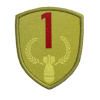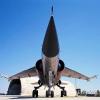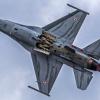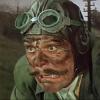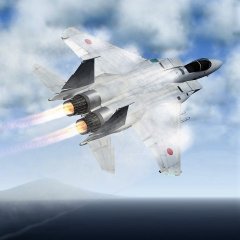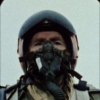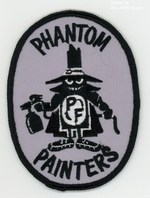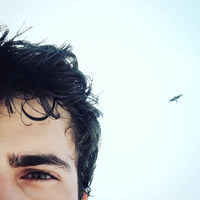Leaderboard
Popular Content
Showing most liked content on 01/31/2020 in Posts
-
4 points
-
3 pointsYes it is possible. Change the corresponding lines in the HUDDATA.ini file (it is extracted from the FlightData.cat in your 'Flight' folder). HUDDATA.INI You can choose any color of indicators using this utility - Colourpicker.rar
-
3 points
-
2 points
-
2 pointsMeet The Imperial Japanese Plane That Terrified The Allies Warfare History Network January 31, 2020, 10:00 AM UT The psychological and military shock that the Allies experienced when they first encountered Mitsubishi’s legendary A6M2 Zero fighter plane at the beginning of the Pacific War may be difficult to understand today. The Zero, while being a revolutionary design in itself, had in fact been flying and fighting in China for nearly two full years before the Western air forces encountered it in open combat in late 1941 and early 1942. ‘Made in Japan’ Can’t Be Any Good, Can It? Reports of its exceptional performance and handling capabilities had been streaming in but were ignored by intelligence experts, who refused to believe that Japan could design or produce an aircraft even approaching American or European standards. It was not until a nearly intact example of the machine was recovered in the Aleutian Islands during the Midway campaign that aircraft designers and military experts were able to study the Zero closely and put it through a series of tests against the best designs the Allies had to offer. With an example of the aircraft to study, Allied engineers began to discover the Zero’s strengths and weaknesses and to build newer, more modern aircraft capable of meeting and defeating it in aerial combat. It is not generally known that the Zero found in the Aleutians was not the first aircraft of this type to fall into Allied hands. The United States also had access to another Zero, which was obtained even before the raid on Pearl Harbor took place. The restorations of the two Zeros took place almost simultaneously and did much to contribute to the demise of the myth of invincibility that surrounded this remarkable airplane. Firsts of Many Kinds for the “Zeke” The Zero was the first all-metal, low-wing monoplane with an enclosed cockpit produced by any world power outside of the United States or Europe. It first flew on April 1, 1939. A product of Mitsubishi’s legendary designer Jiro Horikoshi, the Zero possessed unparalleled advantages of speed, maneuverability, handling, simplicity of design, and a then unheard of range of over 1,900 miles. It achieved this by sacrificing some features that were considered basic to American and European aircraft of the war, namely self-sealing fuel tanks and armor protection for the pilot. This resulted in a low horsepower-to-weight ratio that made the new aircraft not only nimble but one of the lightest combat aircraft ever produced. For a time, the Zero, or Zeke as it was known to the Allies, reigned supreme in the Pacific and ranged across the length and breadth of the world’s largest ocean. However, although it served throughout the war, its period of dominance was relatively brief. By mid-1942 such new designs as the American Chance Vought F4U Corsair and Grumman F6F Hellcat made the odds for a skilled American pilot more than even. The Zero was produced in greater numbers than any other Japanese aircraft, and modified versions of the design continued to see service until 1945. Zero Out-Matches All Comers Over China After a period of ground testing and evaluation, the Zero first saw service in China in July 1940, flying with the 12th Kokutai, or air wing, stationed there. Gradually replacing older, more obsolete aircraft, the Zero quickly racked up an impressive kill ratio against outdated Russian, American, and Chinese designs, many of which were antiquated biplanes. Piloted by experienced, battle-tested pilots, the aircraft soon came to dominate the skies over China. Chinese pilots came to regard the Zero as invincible, treating it with such caution that the mere appearance of these aircraft would usually cause the Chinese to flee before an encounter could even take place. During the latter half of 1940, the Zero gained complete air superiority for Japan, destroying 59 Chinese planes in the air and another 101 on the ground without losing a single fighter to enemy fire. In the opening months of 1941, the American Volunteer Group (AVG), better known as the Flying Tigers, began encountering the Zero in dogfights. The American pilots, flying the nearly outdated Curtiss P-40 Warhawk, proved to be much tougher opponents than the Japanese had previously encountered. The Americans gradually learned that the Japanese pilots, though well trained, were not unbeatable. Reports of the Zero’s exceptional performance began to filter up to the AVG’s commander, Brig. Gen. Claire Chennault. When they were passed on to Washington, the reports were generally dismissed as exaggerated or impossible. Western Arrogance Hinders American Pilots Why this myopic mind-set? It largely stemmed from a belief that the Japanese were incapable of producing any aircraft more advanced than those of the Western powers. Japan, many believed, was simply producing poor copies of outdated American or European aircraft. An article titled “Japan Is Not an Airpower” appeared in the January 1941 issue of Flying & Popular Aviation magazine. It stated, “Japan’s military planes are so few and poor in comparison with other powers … largely because civil aviation there is in an extraordinarily low state of development. The experience of the Japanese people with mechanical gadgets is definitely limited. They have not yet gotten beyond merely imitating what others have done. At that they are the world’s finest, but imitativeness is little help in aeronautics … anything the Japanese obtain via the imitation route is bound to be three years old. With planes being the most complicated and highly developed type of machinery in existence, a certain amount of native ingenuity is required to make them work…. Japanese industry is not well adapted to the high degree of precision required in planes.” The article then goes on to boldly state, “Someday, perhaps, the Japanese will have accumulated enough experience in a mechanical way to catch up, but that day will not come soon. Japan turns out a nation of blind patriots but gives only limited schooling in the mechanical arts. The general level of education in Japan is low. Their equipment is deficient. It takes a good educational system to turn out a nation of mechanics. Blind patriotism is undoubtedly pleasing to Japan’s rulers, but it doesn’t cut any ice with a 1,000 horsepower motor. Motors just don’t understand noble sentiments.” Pearl Harbor Provides Rude Wakeup Call In conclusion, the author stated that in numbers and quality Japan was a sixth-rate air power and that it would “not be adequate in the event of an encounter with a possible major opponent, such as the US or USSR.” However, a rude shock was in store. When this article appeared on newsstands across America, Pearl Harbor was but 10 months away. The first inkling that the Japanese were able to come up with a first-rate, totally original design literally fell into American laps on November 26, 1941, the same day the Japanese carrier task force left home waters bound for Pearl Harbor. Two Japanese naval pilots, belonging to the 22nd Air Flotilla, flying from their base on Taiwan and bound for a new posting in Saigon, French Indochina, became separated from the rest of their squadron of 33 planes due to dense, low-lying fog. Short on fuel and unable to communicate with each other because their radios had been removed as a weight-saving measure to increase the flying range of their aircraft, they continued flying along their last compass heading. Fateful Emergency Landing Delivers Pristine Zero to Allies Before long the clouds parted and a beach adjacent to a small coastal village appeared below, and the relieved pilots circled and prepared to land. Flying Petty Officer First Class Shimezoh Inoue, a native of Fukuoka Prefecture, was piloting a Zero with serial number 3372 and marked V-172. His wingman, Flying Petty Officer Second Class Taka-aki Shimohigashi, from Kure in the Hiroshima Prefecture, flew a Zero with an unknown serial number marked V-174. The airmen had been scheduled to fly a southwesterly course to Hainan Island and then on to Saigon. They did not realize that they had crossed the straits separating Hainan from the Chinese mainland and had somehow ended up over the Liuchow Peninsula, near the town of Teitsan. As they approached the beach, the fog cleared and both pilots brought their aircraft down. Inoue landed successfully, but Shimohigashi’s Zero was extensively damaged during the beach landing. The planes came to rest alongside each other, and the two men climbed from their cockpits to be met by a group of schoolchildren. They asked to be taken to a telephone so they could contact their base and were led to a local schoolhouse. They were never seen again. Interviews with eyewitnesses after the war revealed that the pilots were then captured and that the local Chinese militia, perhaps recognizing the importance of their prize and wishing to preserve secrecy, summarily executed them. The undamaged Zero, Inoue’s, was pulled off the beach while Shimohigashi’s badly damaged aircraft was crudely hacked to pieces and moved piecemeal to remove it from view as quickly as possible. This was to prevent the Japanese from knowing about the capture of the two Zeros. Clandestine Efforts Conceal Coup From Japanese It took months to transport the two Zeros by ox cart under the noses of the Japanese Army units in the area to the inland city of Liuchow. By summer’s end, 1942, Inoue’s Zero had been reassembled with substitute fuselage panels aft of the cowling being fashioned to replace those lost on the trip north. It was during this time that Maj. Gen. Nathan F. Twining, then director of War Organization and Movement, visited the area on a liaison mission to the Chinese Air Force and was shown the captured Zeros. He informed General Chennault of their existence. In October 1942, Gerhard Neumann, commander of the 23rd U.S. Fighter Group, along with Staff Sgt. George L. Mackie, was ordered by Chennault to Liuchow to complete the restoration of one Zero from parts taken from the two aircraft. The reconstituted Zero was then to be test-flown against available U.S. models. Bill Barnes, a war correspondent from Yank magazine, and War Department photographer Mac McGregor accompanied Neumann and Mackie to document and report on the salvage project. Restored and Refitted, Captured Zero Ready For Evaluation It was discovered that the two Zeros contained no radio equipment, although they were equipped with antennae, and that they had already been repainted in Chinese camouflage and markings. Neumann adapted and installed American radio equipment for communication, adjusted the engine timings, and tested the engine and flight controls for a week before determining that Zero 3372 was ready to fly. During the inspections Neumann removed a cover on one of the wing gun ammunition bays and found, to his surprise, a woman’s Japanese-style decorative hair comb. This poignant souvenir, which he kept, was thought to have belonged to the pilot’s wife or sweetheart. Colonel John R. Alison, commander of the 75th Fighter Squadron, soon arrived by train at Liuchow to conduct the in-flight testing, and thus became the first American to fly a Japanese Zero. It was a short but uneventful hop to the airfield at Kweilen, with landing gear down and locked the entire way. It appeared that the Zero’s hydraulic lines and fluid for the undercarriage were damaged beyond repair, so Neumann replaced them with parts salvaged from the wrecks of Japanese bombers downed in the area, and even included original Japanese spark plugs. They tested the wheels in a hangar workshop and confirmed that they were working fine. On the next test flight, however, the wheels were raised but did not lock into position when lowered. The Zero cracked up on landing, twisting the fuselage, but Colonel Alison emerged unhurt. It took long days of rebuilding before the Zero was ready to take to the air once more, and during this time no less than five American aces with the 23rd Fighter Group test-flew the Japanese fighter. They formed a very exclusive club: John R. “Johnny” Alison (6 victories), Albert J. “Ajax” Baumler (9), Bruce K. Holloway (13), Grant Mahoney (5), and Clinton D. “Casey” Vincent (6). A Long Journey to the States and a Passage to India When testing was completed, Zero 3372 was then flown from Kunming, China, to Karachi, India, accompanied by an escort of 23rd Fighter Group P-40s. During the long-distance flight all of the P-40s had to abort for one reason or another, but the Japanese-built Zero managed to complete the grueling journey without a single mechanical malfunction, arriving in India alone. In Karachi, the Zero was crated and placed aboard a ship for further testing in the United States. The ocean voyage was not uneventful. During a storm the forward fuselage and wings of Zero 3372 were damaged. They were off-loaded in Havana, Cuba, for a change of ship bound for the U.S. mainland. The Curtiss Aircraft Company volunteered to rebuild the damaged Zero once again, free of charge, in exchange for a chance to evaluate the Japanese fighter against Curtiss aircraft. Six months of repair and restoration followed at the Curtiss plant in Buffalo, NY. Now bearing U.S. markings and the tail fin EB-200, the captured Zero underwent further tests at Wright Field, Ohio, and the Army Proving Grounds at Eglin Field, Fla., beginning in September 1943. In 1945, Zero 3372 was photographed in California on a War Bond tour, then mysteriously vanished. No record of its disposition exists. It is unknown whether it was destroyed or scrapped after the war, or whether is still sits in some dusty crates in some long-forgotten warehouse, waiting to be discovered once again. One Zero Disappears; Another Falls into American Hands Zero 3372’s more famous cousin, however, left behind a celebrated trail and is often credited with helping to turn the tide of the war in the Pacific. In June 1942, while Zero 3372 was being reassembled at a dusty airfield deep in the interior of China, a Japanese task force under the command of Rear Adm. Kakuji Kakuta was approaching the cold, wet, windswept Aleutian Islands off the coast of Alaska. The 2nd Carrier Striking Force of the Imperial Japanese Navy was to launch a diversionary attack against the American base at Dutch Harbor, only a hundred miles from the Alaskan mainland. This was an attempt to draw attention away from a major Japanese assault against Midway Island 2,000 miles to the south. The northern force was also to support landings on the islands of Attu and Kiska, the only U.S. territory occupied by enemy forces during the war. On the morning of June 3, 1942, the light carriers Ryujo and Junyo, accompanied by two heavy cruisers and three destroyers, launched a strike against Dutch Harbor. The murky weather forced the Junyo’s planes to turn back, but the 13 attack bombers from the Ryujo, accompanied by three Zero fighter escorts, pressed on. Since the poor visibility made formation flying impossible, the planes headed singly for Dutch Harbor, navigating by dead reckoning. Fateful Diversionary Attack During Battle of Midway Under the command of Lieutenant Masayuki Yamagami, Ryujo’s planes found Dutch Harbor through a break in the clouds and swept in to the attack, destroying radio stations, fuel depots, and harbor facilities. No enemy fighters were encountered, so the Zeros strafed flying boats tied to their moorings. One Zero, piloted by Petty Officer First Class Tadayoshi Koga, took a hit in the gasoline tank from small-arms fire. The leak became heavy and, rapidly losing fuel, it became evident that Koga would be unable to return to the carrier. He reported his situation to Yamagami and prepared for an emergency landing. Accompanied by his companions, Koga headed for a small, deserted island just east of Dutch Harbor. It had been designated as a predetermined emergency landing spot, where downed pilots could await pickup by submarine. Northern Tundra Doesn’t Make a Good Runway Yamagami watched Koga’s landing. From above, the area looked ideal—a flat, grassy stretch of ground. Koga was seen to be in full control of his aircraft and maneuvering calmly for a landing. When the wheels of Koga’s Zero touched ground, the aircraft immediately stood on its nose and flipped backward, coming to rest upside down. What looked smooth and safe from the air turned out to be a treacherous patch of peat and bog, known as muskeg in the northern tundra regions. Koga did not emerge from his plane. The Japanese were under strict orders to destroy all downed Zeros to prevent them from falling into enemy hands but, thinking that Koga might still be alive but badly wounded, Yamagami could not bring himself to do it. Low on fuel and with thick fog beginning to swallow the crash site, Yamagami was forced to lead the rest of the flight back to the Ryujo, where he reported the crash. A waiting submarine was ordered to investigate. Crews were landed under cover of darkness and searched eagerly for their countryman, but the weather continued to worsen and they had no choice but to give up without finding anything. A Dead Japanese Pilot and an Almost Intact Zero A short time later an American Navy search group out on patrol happened upon the island and spotted Koga’s crashed Zero from the air. A ground party arrived on the scene and found the upside down Japanese fighter in almost perfect condition, except for slight damage to the nose and wingtips where it had impacted with the soft earth. Koga was still inside his canopy, hanging from his straps. His skull was crushed and his neck broken, probably from a sudden impact with his instrument panel. Inside his flight suit were a few photographs and other personal effects. Koga was given a decent burial nearby. Naval intelligence officers were ecstatic. Here, right in their own backyard, was a nearly perfect, brand-new A6M2 Zero that had been badly mauling Allied aircraft in the Pacific for months. A few pieces had been collected from planes downed either at Pearl Harbor or the Philippines in an attempt to unravel the design of the aircraft, but most downed planes were badly damaged. At this time, Zero 3372 was undergoing restoration in China, and though nearly complete, it would be almost four months before an American officer would inspect it firsthand. Rising Sun Replaced With U.S. Navy Insignia in San Diego Koga’s Zero was carefully removed from the island and packed for shipping to the Repair & Assembly Department at the Naval Air Station North Island, San Diego, where it arrived in August 1942. There it was carefully disassembled and studied in an old blimp hangar. The damaged portions were repaired, and the plane restored with the markings of the U.S. Navy in place of the Rising Sun. Major repairs were needed for the tail, canopy, and nose, and the broken Sumitomo-made propeller was replaced with an American-made one from Hamilton Standard, which was virtually identical. This repair work, without any ability to consult technical data or blueprints, was difficult and time-consuming. It was completed by early October, about the same time that Zero 3372 was taking to the air in China. A series of tests was begun in San Diego, the first formal evaluation of a Zero under controlled conditions, and later completed at Wright Field in Ohio. The legendary fighter began to give up some of its most prized secrets. Restored Zero Gives America’s Best a Run For Their Money What the Americans found astonished them. The Zero was flight-tested against the most modern aircraft then in the U.S. inventory, namely the Lockheed P-38 Lightning, Bell P-39 Airacobra, North American P-51 Mustang, P-40 Warhawk, Grumman F4F Wildcat, and Chance Vought F4U Corsair. The Zero bested them all in range and maneuverability, but also betrayed its weaknesses. Lacking in armor protection or self-sealing fuel tanks, the Zero was discovered to be a literal flying lighter, likely to erupt in flames from the slightest burst of gunfire. It had a limited low speed when put into a dive, a slow rate of roll, and insufficient high-altitude performance. While a fragile aircraft, it was still a deadly menace in the hands of an experienced pilot, and since it surpassed every U.S. aircraft then flying, new dogfighting tactics were devised to give Allied pilots locked in a life-and-death struggle in the Pacific a fighting chance. Lieutenant Commander John S. Sati was the officer charged with the task of devising tactics to counter the dreaded Zero and had flown the plane in its first test flight at the San Diego Naval Air Station. The best tactic seemed to involve taking a position above the Zero and making a quick dive to gain airspeed and get in the first blow. (the good ol' "Boom & Zoom" of WW1 which had been forgotten. Also, a tip of the hat to "Jimmy" Thatch, who devised the "Thatch Weave" to combat the Zero. Now often called "Drag & Bag".) Turning the Tide Against Japanese Air Superiority Technical data gleaned from the Zero also went into the design and evolution of the Navy’s new Grumman F6F Hellcat, then just beginning to enter service. With massive armor, a tough internal structure, and heavy machine-gun armament, the Hellcat was the Navy’s answer to the Zero. While not quite as elegant or agile as the Mitsubishi design, its rugged performance enabled it to absorb tremendous punishment while delivering the same to the lightweight Japanese fighter. The days when the Japanese ruled the skies over the Pacific were over. In a final test of structural strength at Wright Field, Koga’s captured Zero was reduced to scrap in December 1942, but it had served its American captors well. The results of the tests made with the Army’s Zero 3372 and the Navy’s Aleutian Zero were found to be in agreement, and the findings were disseminated to aircraft designers and fighter pilots alike. Japanese Design Changes Too Little, Too Late As the war progressed the Japanese continued to refine and further develop the Zero. Improvements included self-sealing fuel tanks (somewhat belatedly), improved handling and control surfaces, and engines with greater horsepower for an increased rate of climb and speed, but the days of the plane’s supremacy had passed. In the hands of a skilled pilot the Zero was still a worthy adversary, but Japan’s last advantage also ebbed away as the losses of skilled, battle-tested pilots increased at an ever alarming rate with fewer and fewer replacements available. Training programs were drastically cut, younger and less capable pilots were hurriedly pressed into service, and it was not uncommon during the last year of the war for a new Zero pilot to be barely able to take off and land the aircraft without any additional combat training. The inevitable kamikaze attacks followed, with predictable results. The zenith of the Zero’s career had passed in the latter half of 1942. An inside look at an opponent’s most advanced technology does not often happen in the course of a war, in spite of the best intelligence available. To this end, the Zero aircraft lost by Inoue and Koga helped immeasurably to shorten the war, ironically saving countless lives on both sides. This article originally appeared on the Warfare History Network. It was originally featured in 2019 and is being republished due to reader's interest. .
-
2 points
-
2 points
-
2 points
-
1 point
-
1 point
-
1 point
-
1 point
-
1 pointNo worries m8, I did take it that you were trying to put down what the guy was trying to do but I do also see your point......we all have our pet likes and dislikes regarding what happens within SF. ps, keep your great work.
-
1 pointMan, I totally did NOT question the fact users may want to use such functions because those are not realistic. I simply stated why TK didn't include them nor highlighted them; his SF series is described as a lite flight sim, so realism is still a factor in his original product. This is not an arcade flight sim like Ace Combat, so I don't see why TK should have included such "rearm while in flight" option by default. So, it is a cheat in my view and in TK's as well. I'm the one working on the Moon and Mars terrains, but that does not imply I despise realism, nor I criticize those who would like to rearm in-flight. My apologies if my opinion wasn't clear enough.
-
1 point
-
1 pointSince I don't do real world skins that often... I hope you like these ones. I saw them searching for something else and thought that I must do them. Possible that somebody created them already. F-4K Phantom FG.1, 43rd Squadron RAF, 70 Years Anniversary skin without Spinestripe... ...and with it
-
1 pointTorno, sey que es fuera de topico pero hay alguna chance de lanzar los Fw y Ta 152? Hace como 1 año de espera. Gracias!!
-
1 point
Important Information
By using this site, you agree to our Terms of Use, Privacy Policy, and We have placed cookies on your device to help make this website better. You can adjust your cookie settings, otherwise we'll assume you're okay to continue..

